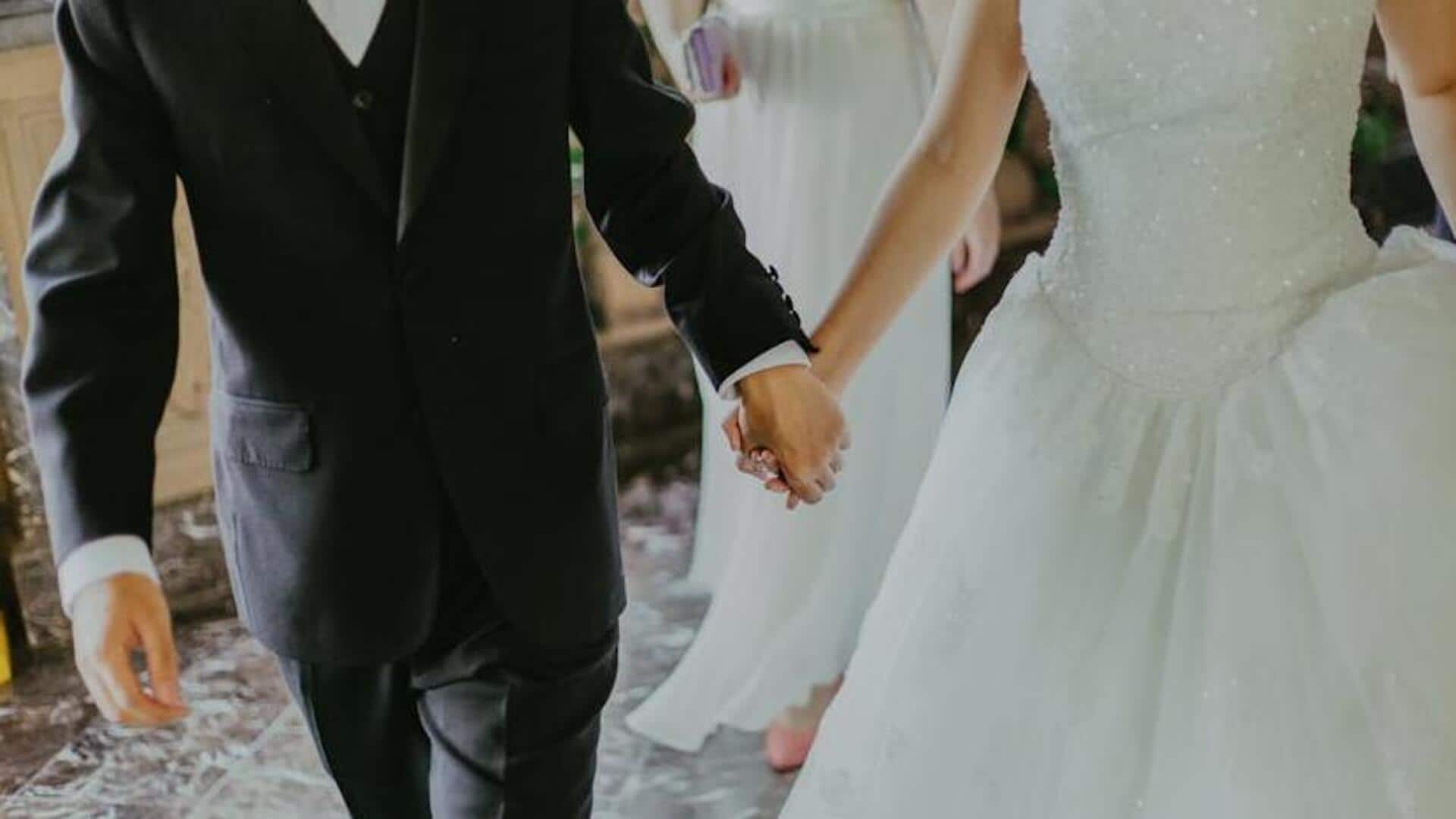
5 unique Norwegian wedding traditions (#4 is exciting!)
What's the story
Norwegian weddings are steeped in rich traditions that reflect the country's cultural heritage.
These customs, which have been passed down generations, add a unique charm to wedding ceremonies.
From symbolic rituals to traditional attire, each element holds a special significance.
Here are five captivating Norwegian wedding traditions that are still cherished by couples today. It offers a glimpse into the timeless practices that make these celebrations truly memorable.
Bridal crown
The bridal crown tradition
In Norway, brides commonly wear an ornate silver or gold crown on their wedding day. The tradition symbolizes purity and innocence.
The crown is typically decorated with small charms or dangling spoons that tinkle gently as the bride moves. The sound is believed to ward off evil spirits and bless the couple's union.
Wearing this crown is an honor and adds an element of regality to the bride's appearance.
Kransekake cake
The Kransekake Cake Ceremony
A traditional Norwegian wedding cake, called kransekake, is also served at weddings.
Made from almonds, sugar and binding ingredients, the cake is shaped into concentric rings stacked over one another to form a tower-like structure.
It is decorated with icing and sometimes filled with small treats or gifts for guests.
The kransekake symbolizes unity and prosperity for the newly-weds and makes for a dessert and centerpiece at the reception.
Traditional attire
The bride's traditional attire
Norwegian brides usually don bunad, a traditional folk attire unique to different regions of Norway.
Each bunad comes with its own colors, patterns, and embroidery that represent its region.
By wearing this attire, brides not only get in touch with their heritage but also display the regional diversity within Norway itself.
Bunads are usually handmade with quality materials like wool or silk fabrics with intricate silver brooches or belts.
Suitor procession
The groom's suitor procession
Before a Norwegian wedding ceremony, there is usually a "suitor procession."
The groom's friends sing songs as they walk to the bride's house.
There, she is asked for permission by the groom's parents. If approved, they head to the church service together.
This tradition adds the excitement and anticipation to the event, culminating in the couple uniting in matrimony before their loved ones.